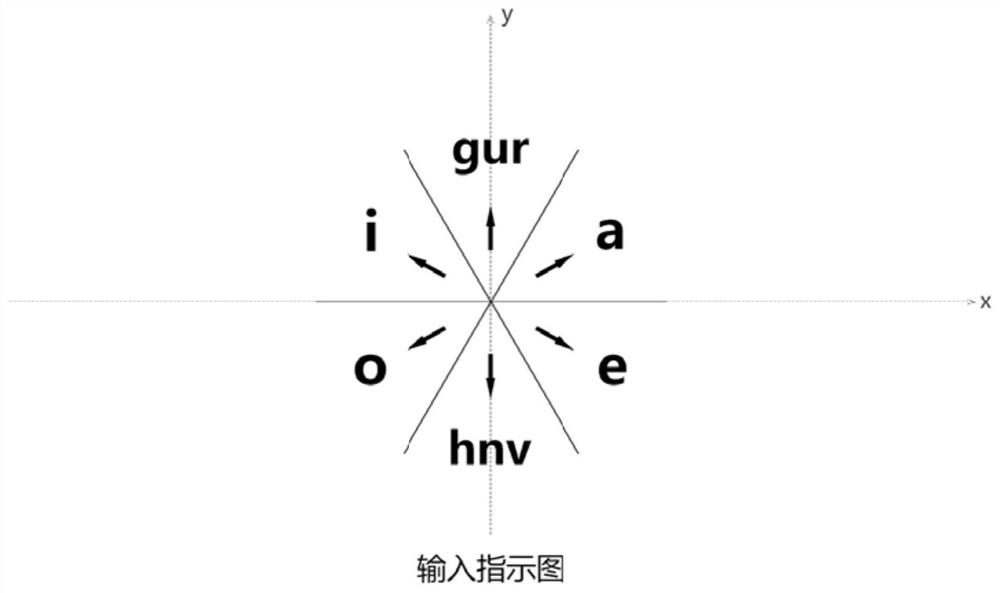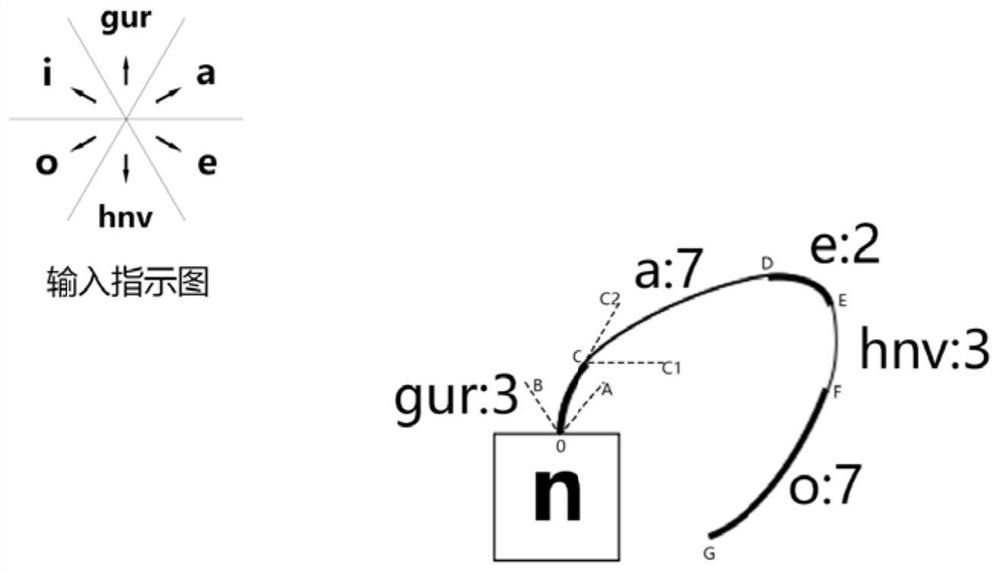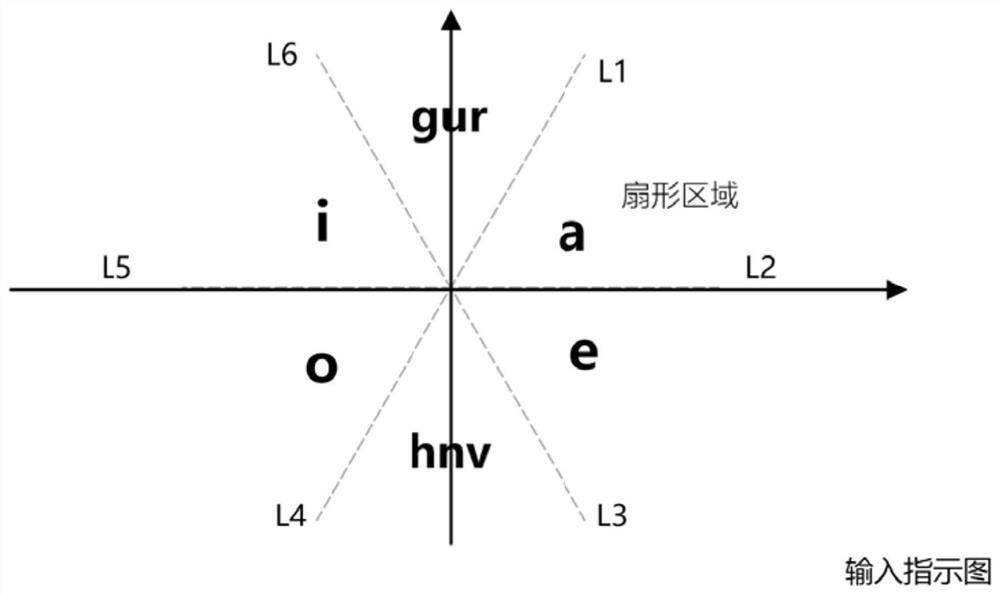An input method and processing terminal based on taxiing trajectory recognition
An input method and trajectory technology, applied in the input/output process of data processing, electrical digital data processing, instruments, etc., can solve the problems of non-user target input, low taxiing trajectory recognition rate, low input efficiency, etc., and achieve fault tolerance Good, convenient calculation of trajectory efficiency, and the effect of improving recognition accuracy
- Summary
- Abstract
- Description
- Claims
- Application Information
AI Technical Summary
Problems solved by technology
Method used
Image
Examples
Embodiment 1
[0054] This embodiment takes inputting Chinese pinyin as an example to complete the input of Chinese characters. In actual use, of course, various characters such as pinyin letters and English letters can also be input, as long as there are various characters in a predetermined sequence or characters of coded combinations. The input object is not specifically limited.
[0055] According to the rules of Chinese Pinyin, that is, according to the official Chinese Pinyin scheme, the character set that can follow other Pinyin (such as initials or other letters) in Pinyin is {a,e,g,h,i,m,n ,o,r,u,ü}, where ü is represented by v in the computer. During specific implementation, this character set can be adjusted according to the required character set, or all Chinese pinyin letters can be used as the character set. For example, m as a non-initial letter of pinyin will only follow h, and the Chinese characters corresponding to hm are rare and not commonly used, so m can not be added t...
Embodiment 2
[0082] like Figure 8 As shown, Embodiment 1 uses Chinese Pinyin letters or English Pinyin letters as characters for sliding input. The difference from Embodiment 1 is that this embodiment uses strokes as characters for sliding input. Of course, other characters can also be used for input. . Using Chinese strokes as characters for sliding input, Chinese strokes can be divided into several strokes, only need to use Chinese strokes as a character set, and establish the association between each Chinese stroke and direction. For example, Chinese font codes are divided into five stroke classes according to the regulations of the national official "Modern Chinese General Character List", and can certainly be divided into other strokes according to other rules, such as being divided into eight according to "Yongzi Bafa". In this example, if Figure 8 As shown, the Chinese strokes are divided into five strokes including dot, horizontal, vertical, fold, and apostrophe, plus a wildcar...
Embodiment 3
[0084] like Figure 9 As shown, the difference from Embodiment 1 is that the length of the curve segment of the taxiing track in Embodiment 1 does not consider the minimum length, that is, the length of the curve segment of the identified curve segment recognizes the corresponding character regardless of the length. In addition, Embodiment 1 sets The characters in the character set refer to characters that can be legal characters, such as Chinese pinyin, English letters, Chinese strokes, etc., but do not include special characters such as numbers, symbols, and functional operators. These special characters cannot Characters that form legal characters. In order to be able to input these special characters, in this embodiment, special characters are added to the character set, and special characters are associated with fixed directions one by one, Figure 9 Including the addition of the "delete" function operator and the "word selection" function operator, the "word selection" ...
PUM
 Login to View More
Login to View More Abstract
Description
Claims
Application Information
 Login to View More
Login to View More - Generate Ideas
- Intellectual Property
- Life Sciences
- Materials
- Tech Scout
- Unparalleled Data Quality
- Higher Quality Content
- 60% Fewer Hallucinations
Browse by: Latest US Patents, China's latest patents, Technical Efficacy Thesaurus, Application Domain, Technology Topic, Popular Technical Reports.
© 2025 PatSnap. All rights reserved.Legal|Privacy policy|Modern Slavery Act Transparency Statement|Sitemap|About US| Contact US: help@patsnap.com



